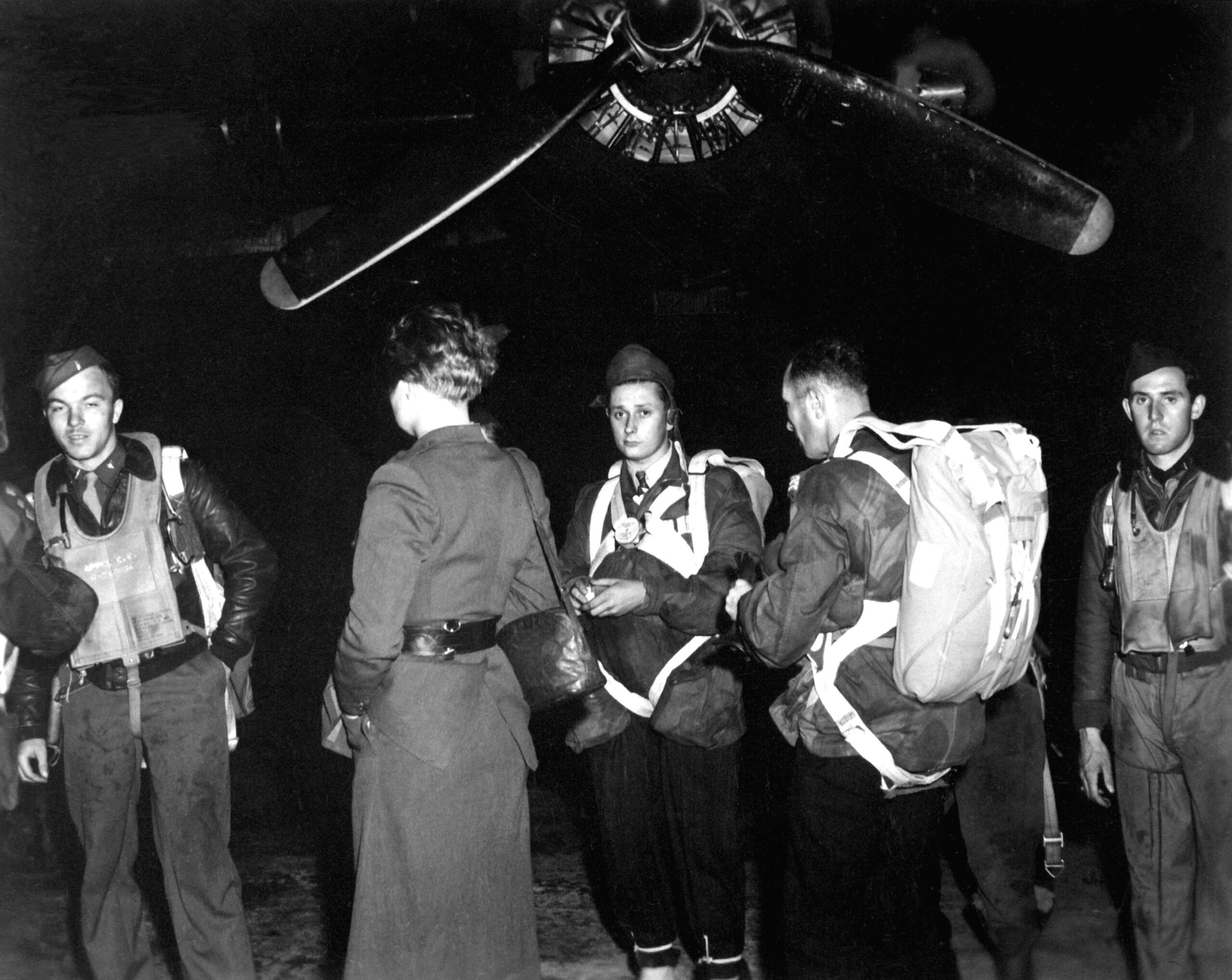OSS Jedburghs in front of B-24 just before night takeoff. Area T, Harrington Airdrome, England, circa 1944. Credit: Joint Chiefs of Staff. Office of Strategic Services. Field Photographic Branch.
During World War II, the U.S. Office of Strategic Services (OSS), the forerunner of the Central Intelligence Agency (CIA), was instrumental in bolstering special operations across Europe. Working in tandem with its British counterpart, the Special Operations Executive (SOE), the OSS and SOE divided global regions into areas where one would have dominance over the other. While the SOE held sway over Western Europe, it was agreed that the OSS’s Special Operations (SO) branch would operate in this region under the general supervision of the SOE, while still maintaining its autonomy.
The OSS had to build a supply chain in England to assist in the Allied liberation of Europe, as the SOE could not also support OSS operations. The first step was to get aircraft capable of clandestinely delivering supplies into occupied Europe. On 5 May 1943, SO requested a bomber squadron to drop agents and supplies into German-occupied Europe from the U.S. Army Air Force (USAAF). Five months later, after considerable pressure from the OSS Director, Major General William “Wild Bill” Donovan, SO received its sixteen-plane squadron with the promise of another by the end of the year.
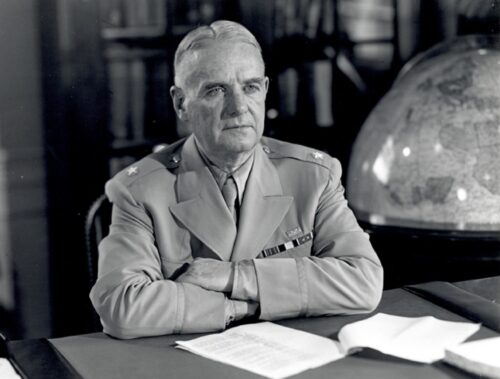
The B-24 Liberators were equipped with a device called “Rebecca” that helped the navigator locate a ground station using a sending device called “Eureka.” This way, they could find the drop zones where the partisans were waiting. To confirm that they were not dropping supplies to the enemy, the aircrew used an “S-Phone,” a special radio that allowed two-way communication with the partisans.
The B-24s had some modifications to facilitate the drops. The ball-turret was replaced by a cargo hatch, known as the “Joe Hole,” through which the parachutists, known as “Joes” “or Josephines”, jumped. Other supplies were loaded into special 300 lb. containers in the B-24’s bomb bay racks and the fuselage surrounding the “Joe Hole”. The pilot and copilot’s windows had special blisters that improved their visibility, and the waist guns were removed and replaced by blackout curtains. The B-24s were painted glossy black to avoid being spotted by searchlights.
Operation Carpetbagger
The operation was codenamed Operation Carpetbagger. The inaugural missions of Operation Carpetbagger were carried out from Royal Air Force (RAF) Tempsford in January 1944. The 801st / 492nd Bomb Group began operations from RAF Harrington in March 1944.The 801st B-24 squadron, under the command of Colonel Clifford Heflin, was initially formed for anti-submarine operations. However, it was later re-designated as the 492nd Bomb Group in August 1944 and gained popularity as the “Carpetbaggers”, named after their mission code, Operation Carpetbagger. This group became the USAAF’s primary unit for conducting nighttime supply drops to resistance and special operations groups in German-occupied Europe. It became in effect the de facto air arm of the OSS.
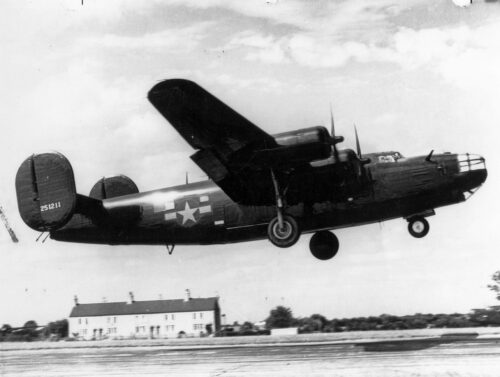
The planes generally flew un-escorted and often at dangerously at low altitude to avoid detection. To maintain secrecy, the airmen were rarely told where they were flying or what they were carrying.
Once dropped into occupied territory, SO personnel would link up with local resistance groups. They would assess the operational needs of these groups, set up drop zones, and then transmit requests for supply drops via radio. The scale of the supply effort undertaken by the OSS and SOE in Europe was immense.
Despite its significance, the logistics capability of the OSS during World War II has seldom been the subject of in-depth study. The resupply operations were vital in aiding those engaged in resistance warfare against German occupation. Without the necessary material support, the missions of these OSS teams would not have been achievable.
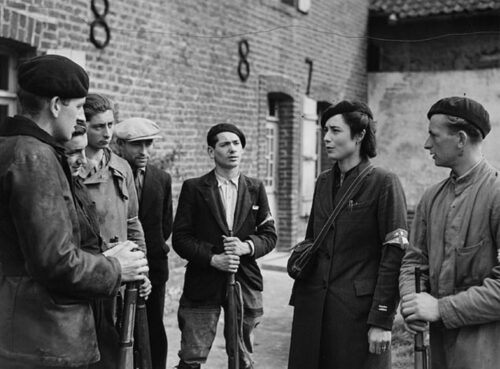
The SO resupply center, located at Area H in England, prepared over 3,335 tons of supplies for delivery. This included 75,000 small arms and 35,000 grenades, which were packed into aerial delivery containers destined for resistance groups in Belgium, Denmark, France, Poland, and Norway. A significant number of these nighttime airdrops were executed by the 492/801st Bomb Group.
The logistics support provided by the OSS to special operations in Europe demonstrated the organization’s flexibility, ingenuity, and unwavering dedication to its mission. This support was instrumental in the triumph of the Allied forces in World War II.
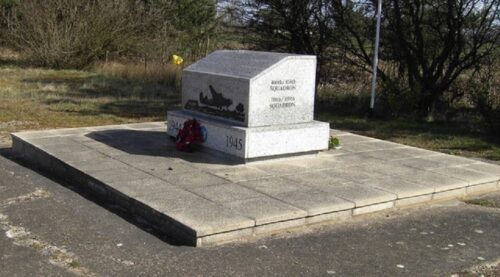
Lesson Learned
The insights gained from the OSS’s logistics support to special operations in Europe during World War II continue to hold relevance in the present day. Contemporary special operations force still depend heavily on strong logistics support for the successful execution of their missions.
The OSS’s strategy of utilizing aircraft for covert supply drops into occupied regions is a technique that remains in use by contemporary special operations forces. Advances in technology have further enhanced the capabilities of today’s special operations forces, enabling more accurate drops and facilitating better communication with forces on the ground.
The capacity to establish and maintain a supply chain, much like the OSS did in England during World War II, remains a critical component of special operations. The OSS’s approach to logistics—adaptable, resourceful, and committed—provides a valuable model for today’s special operations forces.
This approach allows them to adapt to changing circumstances, utilize resources effectively, and maintain a steadfast commitment to their mission objectives. This is a testament to the enduring relevance of the lessons learned from the OSS’s logistics support to special operations in Europe during World War II.
To conclude, the OSS’s logistics support to special operations in Europe during World War II provides valuable lessons for today’s special operations forces. Its adaptability, resourcefulness, and commitment to the cause of freedom remain relevant and inspiring.
Resources
Office of Strategic Services Society
OSSSociety.org
USASOC OSS Website (Official U.S. Army Website)
www.soc.mil/OSS/index.html
Central Intelligence Agency
CIA.gov
*The views and opinions expressed on this website are solely those of the original authors and contributors. These views and opinions do not necessarily represent those of Spotter Up Magazine, the administrative staff, and/or any/all contributors to this site.
